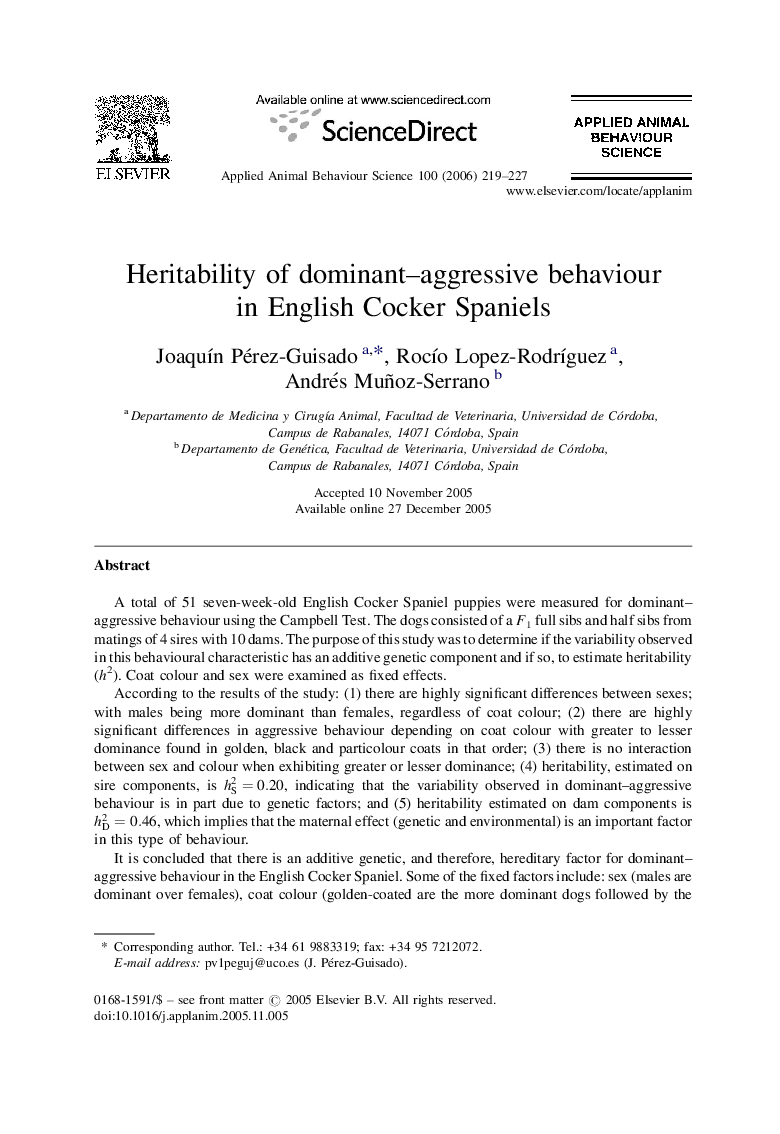| Article ID | Journal | Published Year | Pages | File Type |
|---|---|---|---|---|
| 4524123 | Applied Animal Behaviour Science | 2006 | 9 Pages |
A total of 51 seven-week-old English Cocker Spaniel puppies were measured for dominant–aggressive behaviour using the Campbell Test. The dogs consisted of a F1 full sibs and half sibs from matings of 4 sires with 10 dams. The purpose of this study was to determine if the variability observed in this behavioural characteristic has an additive genetic component and if so, to estimate heritability (h2). Coat colour and sex were examined as fixed effects.According to the results of the study: (1) there are highly significant differences between sexes; with males being more dominant than females, regardless of coat colour; (2) there are highly significant differences in aggressive behaviour depending on coat colour with greater to lesser dominance found in golden, black and particolour coats in that order; (3) there is no interaction between sex and colour when exhibiting greater or lesser dominance; (4) heritability, estimated on sire components, is hS2=0.20, indicating that the variability observed in dominant–aggressive behaviour is in part due to genetic factors; and (5) heritability estimated on dam components is hD2=0.46, which implies that the maternal effect (genetic and environmental) is an important factor in this type of behaviour.It is concluded that there is an additive genetic, and therefore, hereditary factor for dominant–aggressive behaviour in the English Cocker Spaniel. Some of the fixed factors include: sex (males are dominant over females), coat colour (golden-coated are the more dominant dogs followed by the black-coated and finally by the particolour coat dogs) and the common environmental effect due to litter.
